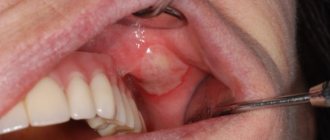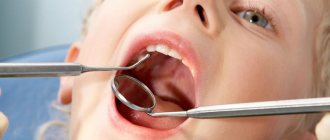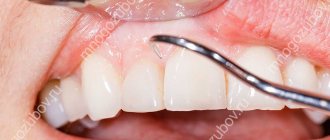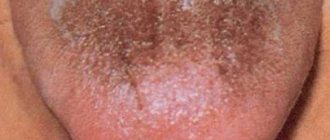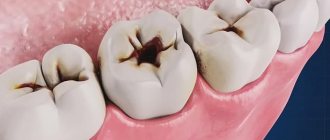“What do you think is the leading facial rejuvenation surgery according to statistics among American plastic surgeons? No, not the fight against wrinkles or even a facelift.
The American Society of Plastic Surgery names bags and swelling on the cheekbones under the eyes as the most common reason for visiting a rejuvenation specialist.
I confirm that this is indeed the case. Many of us are ready to put up with the first wrinkles and small bags under the eyes. But the cheek bags are too noticeable, and creams are powerless against them. Therefore, it is this problem that sooner or later leads to a specialist.”
Andrey Iskornev, plastic surgeon.
Causes
Know! The amount of fat under the skin in the cheekbone area increases over the years, but a number of predisposing factors can accelerate the process of formation of sufas, including:
- sudden weight gain in general;
- genetic predisposition;
- the formation of constant swelling, as a result of which the skin stretches and the subcutaneous space filled with fat increases.
Painting bags can visually increase due to sagging skin , which with age .
Diagnostics
Dentists and maxillofacial surgeons are involved in determining the cause of swollen cheeks. According to indications, the patient is referred to other specialists: otolaryngologists, ophthalmologists, dermatologists. To clarify the diagnosis, the following procedures can be performed:
- Questioning, general examination
. The doctor finds out when and under what circumstances the cheek began to swell, and determines the presence and dynamics of the development of other symptoms. Detects pain on palpation, changes in skin color and temperature. Evaluates the prevalence of edema and tissue density. - Dental examination.
The specialist assesses the condition of the teeth, gums, oral mucosa, and bone structures. Detects signs of inflammation and suppuration, the causative tooth (if present). - Ophthalmological examination.
Indicated for damage to the lacrimal sac and suspected cavernous sinus thrombosis. It is possible to perform ophthalmoscopy, nasolacrimal test, probing of the lacrimal ducts, and other diagnostic procedures. - Otolaryngological examination
. Necessary for sinusitis, paranasal sinus cyst. Can be supplemented with echosinusoscopy and diagnostic puncture. - Radiography.
An x-ray examination of the tooth is prescribed to clarify the condition of the teeth, an x-ray examination of the jaw or zygomatic bone is prescribed to detect fractures due to injuries of the maxillofacial area, an x-ray examination of the accessory sinuses is prescribed to confirm sinusitis, maxillary sinus cysts. - Sonography
. Ultrasound of the salivary glands is recommended for tumors, adenomas, and other pathologies. Allows you to assess the size and structure of organs, identify stones, space-occupying formations, and signs of inflammation. For symptoms of ENT pathology, an ultrasound of the paranasal sinuses is performed to visualize fluid or tumor. - Lab tests
. Most often, a general blood test is used to confirm the inflammatory process, and a microbiological blood test to determine the pathogen. If a tumor process is suspected, a cytological or histological analysis of the biopsy specimen is performed.
Dental examination
Prevention
It is impossible to prevent the development of sufs.
This is because these fat deposits inevitably appear with age.
But you can slow down degenerative processes by following these preventive recommendations :
- the diet should be balanced : it should include more foods containing vitamin B;
- for normal functioning of the hormonal system and to prevent the formation of bags from overwork, it is necessary to get enough sleep , allocating 7-8 hours a day for sleep;
- stable physical activity has a tonic and , which can be achieved by walking in the fresh air for only half an hour a day;
- You need to drink 1.5-2 liters of water per day to maintain water-salt balance.
Remember! For sensitive skin predisposed to the development of such cosmetic defects, nourishing and moisturizing face creams should be used.
When choosing them, it is better to consult a cosmetologist.
How to get rid of bags under the cheekbones: debunking myths
The first thing that comes to mind: massages, medicinal cosmetics, vitamins... This is a good option. It will be great if you add fresh air, proper nutrition and exercise! You will look much better and feel incredibly healthier.
There is only one BUT: these wonderful measures will in no way help you remove the swelling on your cheekbones under your eyes.
Let us remind you: we are dealing with zygomatic hernias, with some mini-containers of adipose tissue that fall down under the influence of the universal law of attraction. Judge for yourself, how can you solve this problem with the most wonderful massage and the longest walks? That's it, no way.
Reviews about the treatment
“
Bags on my cheekbones appeared for the first time several years ago . No cosmetic products helped. The salon advised me not to spend money on creams and suggested doing a facelift .But we were warned in advance that this is not a 100% guarantee of permanently getting rid of the bags, and additional operations may be required over the years.
I agreed, as a result, the bags were almost completely removed, and although more than two years have passed, my face looks almost the same as after the procedure .”
Elizaveta Shipnevskaya, Kislovodsk.
“When I started having sufs , at first I didn’t attach any importance to it, attributing everything to age.
But over the years, my face began to look like the face of an alcoholic. It was unpleasant and ugly, and I decided to have a check-lift .
The procedure is not very expensive for me, but I am satisfied with the effect.
But the specialist warned even then that over time the bags would reappear, and then they would either have to do liposuction or consider the option of fillers.”
Marina Panyutina, 48 years old.
Main indications and contraindications for surgery
There are no medical indications for surgery. Girls who are dissatisfied with their appearance often sign up for it: with chubby cheeks, unexpressed cheekbones and an unclear oval face. Age-related changes, which manifest themselves in the form of prolapse of soft tissues, are also encouraged to sign up for the procedure. Sometimes the operation is performed in combination with other procedures, for example, lipofilling. Many Hollywood stars have undergone plastic surgery for Bisha's lumps (before and after photos).
Popular actresses include Jennifer Aniston and Demi Moore.
It is not always possible to perform surgery to remove a fatty lump from the cheek. There are a number of temporary, relative and absolute contraindications. These include:
- blood diseases (leukemia, bleeding disorders);
- malignant neoplasms (regardless of location);
- acute infectious pathologies;
- serious mental disorders (schizophrenia, depressive disorders);
- severe pathologies of internal organs;
- young age (up to 25 years);
- inflammatory diseases of the oral cavity;
- disorders of the endocrine system (for example, diabetes);
- pregnancy and lactation period.
The danger of atheroma on the face
Sebum and keratin masses accumulated in the atheroma capsule have a cheesy consistency. This is a favorable environment for the development of bacteria. An attempt to squeeze out the atheroma can lead to infection getting inside the capsule and causing suppuration. The main symptoms of its onset are:
- redness of the skin around the atheroma;
- pain in the affected area;
- Migraine-like headaches;
- temperature increase.
Inflamed atheroma can lead to phlegmon - inflammation of adjacent tissues without precise boundaries.
Rice. 3 Self-squeezing of atheroma usually leads to inflammation of facial tissues
Where to have surgery for Bisha's lumps (before and after photos)
According to statistics, every third woman wants to remove Bisha's lumps (before and after photos are presented on the Internet and also in a special section on the website). Bichectomy is not the simplest surgical procedure. Its poor quality can lead to various complications. In order not to make a mistake in choosing a clinic, it is recommended to consider the following parameters:
- rating;
- pricing policy;
- quality of equipment and materials used;
- qualifications and experience of specialists;
- guarantees;
- patient reviews.
The selected clinic must be fully equipped with modern equipment and high-quality materials. The safety of the procedure directly depends on these factors. It is also important to choose a medical center where doctors with extensive experience work. This criterion is the main guarantee of a positive result.
Prices for the service may vary in different private clinics in Moscow. The final cost includes the doctor’s work, materials used and diagnostic measures. As a rule, this price is specified in the concluded contract. Conscientious medical centers provide guarantees for the services provided. After surgery, most patients leave reviews on the official website of the clinic. If everything suits you, the feedback is positive. When a patient is dissatisfied with the quality of treatment, he leaves a negative review, warning other potential clients. Based on the number of positive and negative reviews, conclusions can be drawn about the quality of the services provided.
Swelling of the eyelid
The eyelids are folds of skin around the eyes, consisting of many organs, each of which plays an important role. The muscles help a person blink, the conjunctiva helps to moisturize the eyeball, and the meibomian glands retain moisture. Together they form a complex system, the main purpose of which is to protect the eyes from drying out, dirt, bright light and other negative environmental factors. Inflammation of one of the organs leads to the development of diseases, the main symptom of which is swelling of the eyelid.
Symptoms
Characteristic signs of developing pathology include:
- swelling of the area around the eyes;
- increased temperature (symptoms of barley, conjunctivitis, furunculosis);
- pallor of the skin – with a non-inflammatory nature of the disease;
- characteristic enlargement of lymph nodes - during the inflammatory process.
What complications can arise from eyelid swelling?
- When excessive internal pressure occurs, glaucoma occurs.
- Decreased visual acuity, complete blindness.
- Operable and inoperable cancer.
Description of the disease
Edema of the eyelid is a pathological accumulation of fluid in the area of loose connective tissue. The process results in visible swelling around the eyes.
Swelling in this area forms quite easily. This is due to the fact that the subcutaneous layer of fiber and muscles are poorly developed, and there are many blood vessels. Swelling of the area around the eyes is a common phenomenon that causes a lot of inconvenience. In addition, this is an alarming sign indicating a malfunction that has occurred in the body. Many people first of all think about the aesthetic component. But if a cosmetologist can get rid of the external manifestations of the disease, he will not solve internal problems.
Swelling is a symptom of many diseases, as well as a sign of an unhealthy lifestyle. Thus, swelling can occur due to a violation of the drinking regime or diet, alcohol abuse, or addiction to salty foods. Such swelling is physiological in nature, disappears within 24 hours and does not require medical intervention.
If the swelling is systematic and does not go away on its own, it cannot be considered as a cosmetic problem - you need to contact an ophthalmologist.
Classification of eyelid edema
Depending on the history, there are several types of edema of the paraorbital region:
- Inflammatory. The cause is bacterial damage. As a result of the negative impact, suppuration begins. Pus accumulates in the paraorbital area, the eyelids swell. Externally, the pathology is expressed in the form of hyperemia of the eyelids, a noticeable thickening at the site of the disease.
- Non-inflammatory. Unlike the inflammatory variety, this process rarely manifests itself visually. The main symptoms are pale skin and swelling in the morning. It usually appears on the lower eyelids and indicates a malfunction of some internal organs - liver, kidneys, thyroid gland. It can also occur due to incorrect head position during sleep.
- Allergic. In case of contact with an irritant, it begins to develop rapidly. After eating a food that causes an allergy, swelling appears after a couple of hours. The most aggressive form of the reaction is Quincke's edema, in which not only the eyelids, but also the tissues of the head, neck, and larynx swell. This leads to difficulty breathing and therefore requires immediate medical attention.
- Traumatic. In this case, it is not necessary to injure the area around the eyes: the eyelid swells when the soft tissues and muscles of the face are damaged. This could be a bruise, surgery, consequences of plastic surgery, microtrauma caused by wearing contact lenses.
- Reactive. The cause of its appearance is an inflammatory process near the paranasal sinuses.
Causes of edema
The main causes of paraorbital swelling, which causes discomfort and spoils external aesthetics, can be divided into two categories - pathological and non-pathological.
Non-pathological causes include:
- Fatigue caused by increased eye strain, prolonged sitting at the computer, and lack of sleep.
- Diet violation. For example, the abuse of pickles, which retain water in the body.
- Drinking large amounts of liquid.
- Alcohol abuse. Alcohol displaces fluid from the body, which leads to a constant feeling of thirst. An unpleasant “bonus” is swelling of the paraorbital area.
- Incorrect head position during sleep. If you sleep on a low pillow or without one at all, you can provoke an abundant flow of blood to the head, which causes bilateral swelling. When sleeping on one side, fluid accumulates, resulting in unilateral swelling.
- Poor quality cosmetics, lack of habit of removing makeup.
- Eyelash extensions, tattooing, anti-aging procedures.
- Injuries. A bruise on the bridge of the nose provokes bilateral swelling. Trauma to the eye area is the cause of unilateral swelling. Various maxillofacial and plastic surgeries also lead to similar consequences.
- Predisposition. People with thin skin often experience swelling around the eyes in the morning after drinking an extra glass of water in the evening. Edema can also appear due to excessive physical exertion.
- Age. Over time, the tissue and muscles of the eyelids weaken, fat sag, and large amounts of fluid accumulate, causing “bags” to form.
If we talk about pathological edema of the paraorbital region, they can be provoked by both eye and general diseases:
- Barley. Characterized by pain, hardness, and swelling. The swelling gradually increases, the skin turns red, but the site of inflammation is localized. After opening the abscess, the swelling subsides.
- Conjunctivitis. The causes of pathology are often streptococci and staphylococci. In severe cases of the disease, swelling of the eyelids gradually begins to develop.
- Blepharoconjunctivitis. Symptoms: inflammation of the mucous membrane of the eye and eyelids.
- Trachoma. Pathology caused by chlamydia.
- Chalazion. A disease involving the edges of the eyelid, meibomian gland, cartilage. In some cases it is chronic.
- Blepharitis. Inflammation of the edge of the eyelids, accompanied by hyperemia, peeling, swelling, itching, and loss of eyelashes. The cause of the pathology is an allergic reaction to external irritants.
- Ophthalmoherpes. Symptoms: swelling around the eye, pain, itching, redness of the conjunctiva.
- Benign and malignant neoplasms in the eye area.
- Tuberculosis of the eye.
- Graves' disease. Caused by an increased amount of hormones produced by the thyroid gland. It manifests itself as protrusion of the eyeball, swelling of the periorbital region.
- Demodecosis. Damage by the parasite, accompanied by loss of eyelashes, discharge of pus, redness, itching, swelling.
- Fatty hernia, sinusitis. Often provoke swelling of the lower eyelid.
- Diseases from the ENT system.
- Kidney diseases. Characterized by bilateral, pale, soft-to-touch swelling.
- Pathologies of the cardiovascular system.
- Changes in hormonal levels. Sometimes small swellings are observed on certain days of the menstrual cycle. Swelling can also occur during pregnancy.
Not all pathologies indicated in the list have a real threat to human health and life.
Doctors are especially monitoring people with diseases of the cardiovascular system, kidneys, and endocrine glands.
Prevention
To prevent swelling of the paraorbital area, experts recommend adhering to certain rules:
- Do not drink large amounts of liquid. In the evening, you should refrain from salty foods, as they provoke a feeling of thirst. Before going to bed, just drink a glass of herbal infusion and warm milk. This will quench your thirst and help avoid morning puffiness. Fans of soda, strong tea, and coffee should limit the amount of these drinks.
- Maintain personal hygiene. The eyelids need to be cleaned daily - morning and evening before going to bed. This is especially true for women who use decorative cosmetics. It is also important that each household member has a personal towel that needs to be changed regularly.
- Using quality products. Facial care products and cosmetics should be purchased from trusted manufacturers - this will help avoid purchasing low-quality or counterfeit products. You should also consult with a specialist before the tattoo procedure.
- Compliance with safety regulations. Some professions involve processes and tools that can damage the mucous membranes and skin around the eyes. To avoid this and maintain your health, you must wear special glasses while working.
- Eye protection in the summer. Direct ultraviolet rays have a negative effect on the eyes in particular and the body in general. To protect the delicate mucous membrane of the sun, you need to wear glasses, use an umbrella or a hat with a wide brim.
- Maintaining distance when communicating with people. If the interlocutor is coughing, sneezing, or has visual signs of eye diseases, such as stye, it is better to postpone communication until he recovers.
- Regular cleaning of premises. Doctors note that the number of patients with allergies to dust, mold and other household contaminants is growing every year. This is why it is so important to carry out thorough and regular cleaning of premises. It is also worth going through old things and getting rid of those that are no longer useful, because they are an excellent accumulator of dust in a living environment.
- Pet care. Animal fur is a powerful allergen to which a large number of people are sensitive. To prevent your furry pet from becoming the cause of illness, you must regularly vacuum carpets, rugs, treat upholstered furniture and textiles, and comb your pets thoroughly, especially during seasonal molting.
If paraorbital edema has already appeared or often “pleases” you in the morning, you need to contact a specialist who will help you find out the cause, adjust your daily routine, diet and drinking regimen.
How to treat eyelid swelling
- If the cause of swelling is a bruise, the eyelid usually immediately begins to increase in volume. In this case, it is necessary to wash your hands with unscented soap, since scented options can cause an allergic reaction. Then treat the injury site with an antiseptic and apply a cold compress - it will help stop the growth of swelling. Then cover the affected area with a sterile cloth and go to the emergency room.
- Cold compresses or ice cubes. Moreover, these can be cubes from herbal decoctions, such as calendula, mint or parsley. If necessary, the pieces are removed from the mold, wrapped in gauze, and carefully wiped over the eyelids.
- Tea lotions. It is especially convenient to use tea in bags, which must first be brewed and cooled to room temperature.
- Eye drops. In this case, it is important to consider the cause of the tumor. So, Oftalmoferon will help in case of eye damage from viruses. Tetracycline is indispensable when swelling is caused by bacteria.
- Decongestants. They are usually prescribed in case of blockage of the sebaceous gland. In a hospital setting, Tavegil will help cope with extensive swelling.
- Analgesics. The inflammatory process is often accompanied by painful sensations. To alleviate the condition, you need to take Analgin.
- Ointments. Hydrocortisone ointment has a pronounced antibacterial effect and helps eliminate swelling.
- Absorbents. You can use activated carbon, which will remove the substance that causes the swelling from the body.
- Antihistamines. You should take allergy medications only after seeing a doctor. Suprastin, Claritin, Zodak, Diazolin and others are usually prescribed.
- Use of liquid nitrogen. In the absence of metastases, the substance can help destroy the focus of a malignant neoplasm.
- Operation. Surgery will allow you to remove the cancer with excision of a small area of tissue surrounding the tumor. If further tests are within normal limits, the patient undergoes plastic surgery to correct the defect.
- Application of drops. Drugs from the vasoconstrictor group are used. Vizin and Octilia have proven themselves especially well.
In the case of malignant neoplasms in the later stages, the prognosis does not look very optimistic. If a small area is affected, all tissue from the area is removed during surgery. If manipulation is not practical, the patient is prescribed radiation and chemotherapy.
Lifestyle
You can help avoid swelling by following simple recommendations:
- Do not come into contact with substances that cause an allergic reaction.
- If itching occurs, it is important not to scratch it.
- Regularly visit doctors of various specialties.
- Rejection of bad habits.
- Controlling the amount of liquid you drink.
When contacting our center, the patient can be sure that he will receive the most modern, effective treatment, selected taking into account the individual characteristics of the patient’s body.
Timely consultation with a doctor, competent therapy, a healthy lifestyle, and following the doctor’s instructions are the key to a positive result with minimal financial costs.
Author
Danilova Elena Fedorovna
ophthalmologist
18 years of experience
+7
Advantages of contacting Listratenkov K.V.
You can remove Bisha's lumps in Moscow by contacting Dr. Listratenkov K.V. He carries out all surgical interventions himself. On the website you can clearly see the result after removing Bisha's lumps (before and after). The main principle of work is a trusting relationship between the doctor and patients.
Additionally, free consultations from a surgeon are provided: you can visit the website by providing contact information. In the near future, Kirill Viktorovich will give a detailed answer to this.
Positive patient reviews confirm the safety of surgery to remove Bisha's lumps (before and after photos are presented on the website). The Center for Aesthetic and Laser Medicine has been operating for more than 15 years. During this time, we managed to make several thousand patients happy. The working hours are convenient: the doctor sees from 10:00 to 20:00 from Monday to Saturday, which is suitable even for people with an irregular work schedule.
To make an initial appointment, just contact the administrator at the specified number or leave a request online, leaving contact information, the expected date and time of the appointment.


